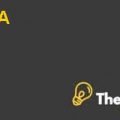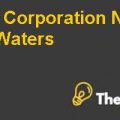Apple Inc. 2012
Introduction
Apple Inc. (formerly Apple Computer) was founded in 1976 and it was known for its personal computers (PCs). Apple Inc. was the leader in personal computer business but the company started to face challenges and was near to face bankruptcy. Steve Jobs took charge and gave Apple Inc. a new life by introducing non-PC innovative products like Smartphone, etc.
Q1. What, historically, have been Apple’s competitive advantages?
Innovative products and intense distribution network were competitive advantages of Apple Inc. Apple Inc. was itself the supplier of its products and had stores to sell them and the company had integrated vertically as well. Resource-based view can help us to understand the competitive advantage of Apple Inc. It had both tangible and intangible resources and these recourses were rare, hard to imitate and it was difficult for the competitor to find the substitute of those resources. Apple Inc. had the best and largest distribution network and had patents of its product design (See Exhibit 2 in the appendix). It had been recognized as a powerful brand and had high number of loyal customers. It was investing 9% of its revenue on research and development, which was the highest amount that was allocated in the industry. No other company had the same resources like Apple Inc, had and these resources could not be moved from Apple Inc. to another company at least in the short run. Apple Inc.’s competitors did not have the distribution network and they were dependent on suppliers; therefore, it was found that competitors would not be able to have similar resources in the short run and it would take years to have those resources. Apple Inc.’s resources were heterogeneous as well as immobile and these resources had all the attributes of VRIO. These resources were not only valuable but they were rare. It was very difficult for Apple’s competitor to copy those resources because high capital was required and they were supposed to make large investment in research and development. It was not easy to have large distribution network across the globe and competitors required to have large capital as well as expertise and there was no substitute of its distribution network. Apple Inc. resources of VRIO helped it to gain a competitive advantage (See Exhibit 1).
Q2. How sustainable is Apple’s competitive position in PCs?
Apple Inc. was the pioneer of personal computer and had been the market leader of the PC business. However, with the passage of time, many competitors challenged Apple Inc., which created intense competition for the company (See Exhibit 3 in the appendix). Competitors were providing personal computers at low price but Apple’s Macintosh was known for its high price because customers were ready to pay premium price for Macintosh. But, Apple Inc. continued to make investment in developing new technology and the same strategy was being followed. Apple Inc. was known for its innovative products and features and it had always taken lead in introducing new products; therefore, the company introduced the idea of digital hub.
Apple Inc. had integrated all their products and provided a place to download applications. Further, it approached Intel to increase the performance of its computer and make it more efficient in terms of energy consumption. Apple Inc. was working with Microsoft in order to build Microsoft Office application for Apple Inc. There was a demand of digital experience by customers and digital hub would help Apple Inc. to fulfill the demand of those customers.
Apple Inc.’s position is sustainable because they are making heavy investment in order to improve its existing products and to develop new products.
Q3. How sustainable is Apple’s competitive position in MP3 players?
Apple Inc. was the market leader of MP3 player and had a significant market share; therefore, it was difficult for any competitor to give tough time to Apple Inc. Apple Inc. continued to improve the quality of its iPod and to introduce new features; which helped it to gain 70% market share. Apple Inc. started to continue its vertical integration strategy and introduced iTunes for its customers to buy music and save them and it was the largest music portal.
Although, Apple Inc. was not making money on music but it had helped the company to increase its number of customers because customers wanted to experience all the features of the company’s products. iPod could be synchronized with Mac and windows. There were numerous competitors that were providing music services like Amazon, Napster and Wal-Mart so customers were supposed to use different music players or devices and this led to intense competition (See Exhibit 3). In addition, Apple Inc. had launched iPhone, which could be used to listen to music.
Apple Inc.’s competitive advantage was sustainable because there was no major player that could challenge Apple Inc. It also integrated their product and services that help the company to sustain its competitive advantage................
This is just a sample partial case solution. Please place the order on the website to order your own originally done case solution.Apple Inc. in 2015 The Case Solution
October 5, 2011 Steve Jobs has tragically died of cancer. Recently retired CEO of Apple was a legend, he changed Apple, a company on the verge of bankruptcy of one of the largest and most profitable companies in the world. In addition, he revolutionized several industries in the process, including music, phones, computers and tablets. This case is the success of Steve Jobs and the challenges facing his successor, Tim Cook. Cook can continue to intensify Macintosh? With Dock sales are down for four consecutive years, prepared to be able to continue to rule in iPhone smartphones amid growing competition from companies such as Google and Samsung? It will be a new creation Apple, iPad, continue to dominate the tablet market, or new competitors, from the Amazon to Samsung, to steal, and to reduce the share of the profit? And could not thrive with Apple, Tim Cook, not Steve Jobs at the helm? "Hide
by David B. Yoffie, Penelope Rossano Source: Harvard Business School 30 pages. Publication Date: May 15, 2012. Prod. #: 712490-PDF-ENG








